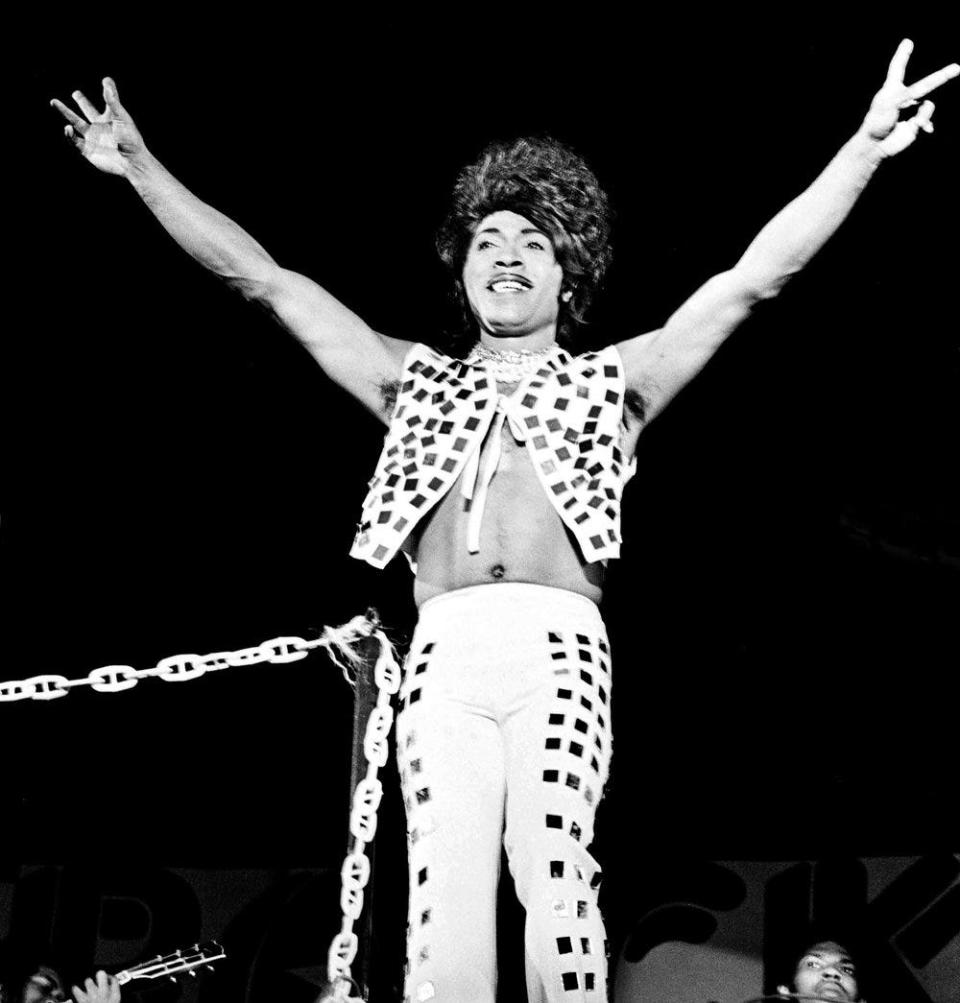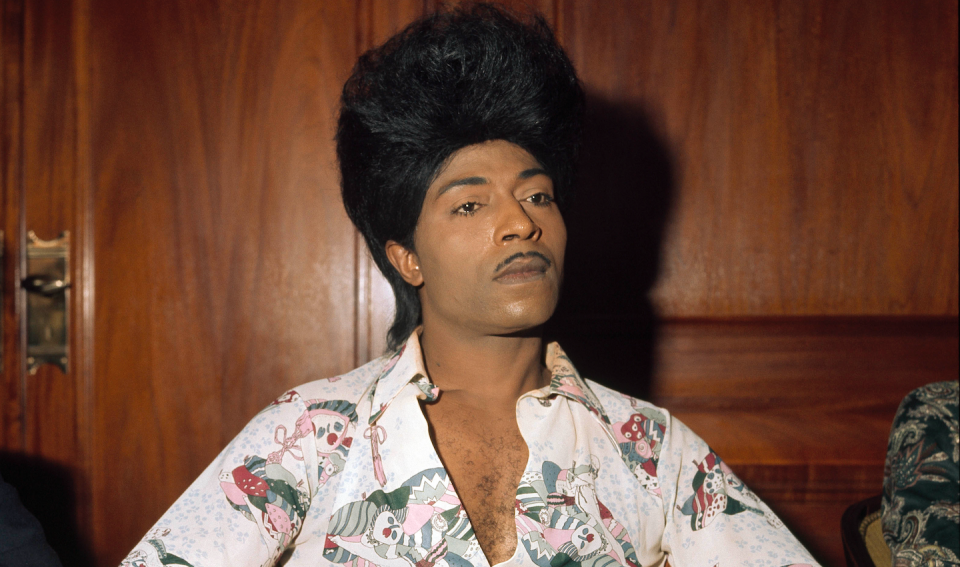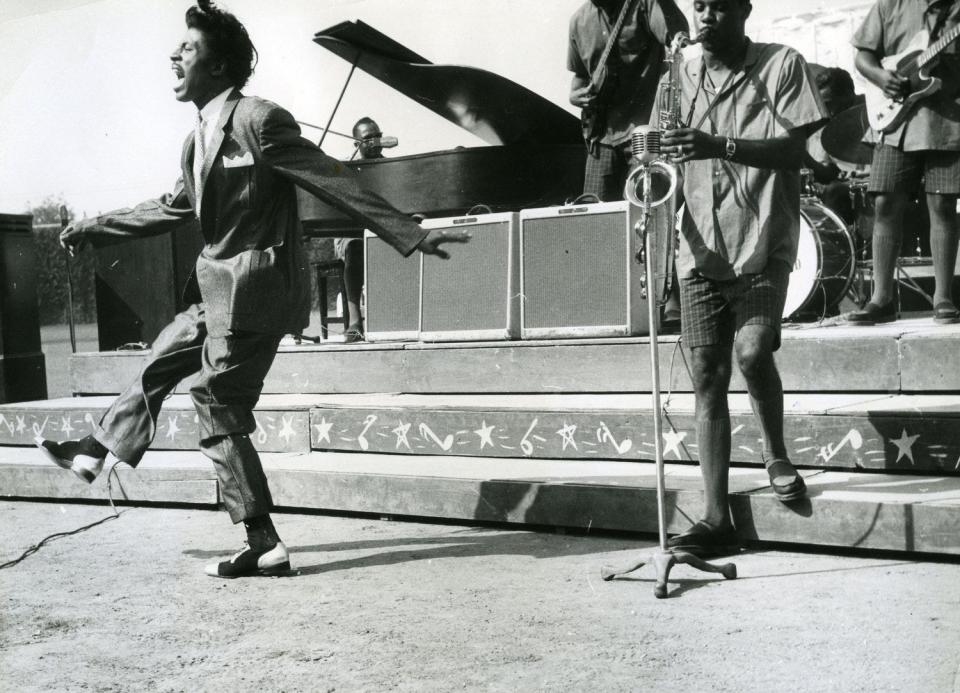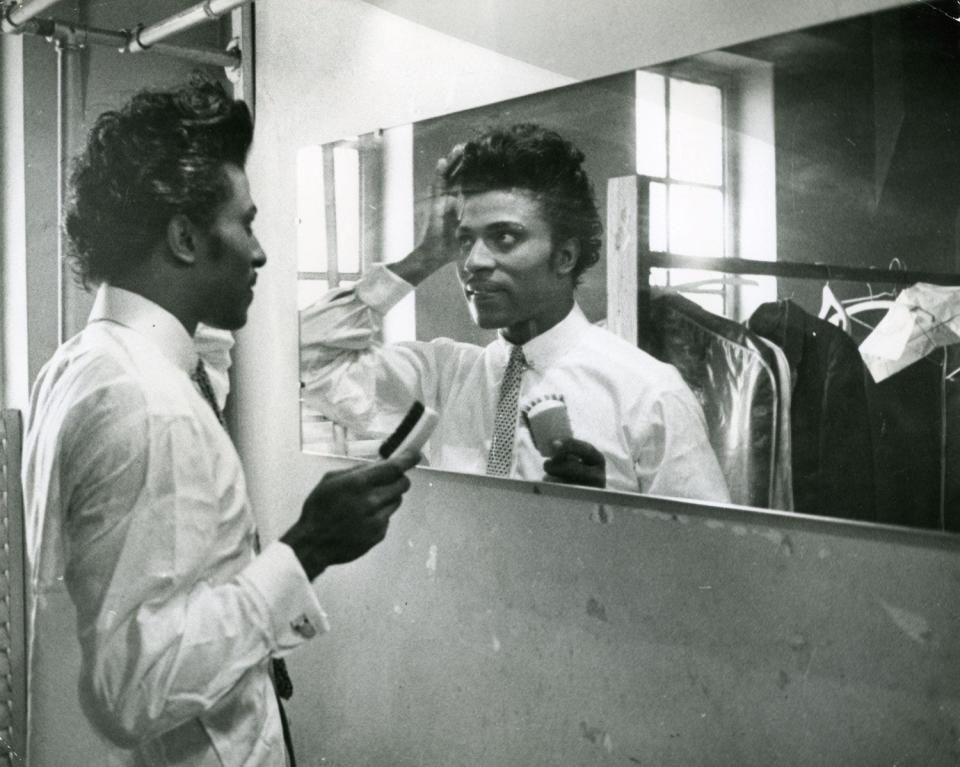From 'Tutti Frutti' to preacher: Little Richard's complicated life analyzed in new film
- Oops!Something went wrong.Please try again later.
- Oops!Something went wrong.Please try again later.
With proclamations such as “I am the bronze Liberace!,” “If God gave it to you, show it to the world!” and a flippant “Shut up!,” Little Richard undoubtedly commanded attention.
But beyond the kohl-lined eyes, mirror ball suits and shaded cheekbones, the musician born Richard Penniman in Macon, Georgia, was complicated, contradictory and an originator of much more than “Tutti Frutti.”
The documentary “Little Richard: I Am Everything” (CNN, premieres 9 p.m. ET/PT Monday) explores how the wild-eyed piano showman struggled with his identity as a Black, queer man performing in the 1950s and how his music inadvertently guided the careers of artists ranging from The Rolling Stones to Culture Club.

Directed by Lisa Cortés (“All In: The Fight For Democracy,” “The Apollo”), “I Am Everything” illuminates a legend.
Here are some highlights.
Little Richard’s music popularized by Elvis Presley, Pat Boone
During the peak of Little Richard’s domination in the mid-to-late-‘50s, the now-classics “Tutti Frutti,” “Long Tall Sally,” “Rip It Up,” “Ready Teddy” and “Lucille” were considered "race music" and popularized primarily on R&B radio stations.
Because most of mainstream radio wouldn’t play “Black” music, the record labels turned to white artists including Elvis Presley and Pat Boone to cover “Tutti Frutti.” Boone, shown in old footage singing the scorcher in a button-down sweater and with a milquetoast smile, moved more copies of the song than Little Richard, who, as the songwriter, was paid a half-cent for every record sold.

Who has Little Richard influenced?
It’s no secret in music history that much of the music originated by Black artists was later stylized by white artists for the sake of commercial success.
To hone that point, the documentary has no shortage of admirers in the entertainment world paying homage to the roots Little Richard planted.
Paul McCartney recalls how he used to stand on a desk to “do his Little Richard” impersonation and says that, “all of my screaming numbers were because of him.”
When The Rolling Stones opened for Little Richard in 1963, Mick Jagger remembers standing on the sidelines through 30 performances to watch, learn and realize, “You don’t have to stand there – use the whole stage.”

Producer/musician Nile Rodgers recalls how much David Bowie idolized Little Richard, to the point of telling Rodgers that he wanted his “Let’s Dance” album to sound like him.
John Waters says he’s sported his distinctive mustache his entire career in “twisted tribute” to Little Richard, and gleefully blames the firebrand for giving him “the fuel to rebel really, really early.”
Tom Jones marvels at Little Richard’s rubbery voice that could jut skyward or careen with nuance, believing Little Richard was the “strongest of his peers,” including Presley and Fats Domino.
Billy Porter emotionally shares that, “Anything I can do as a Black, queer man is because of him.”

Little Richard struggled with sexuality
Throughout his life, Little Richard veered from being proudly gay in an era when homosexuality was acutely taboo – performing with leg propped on piano and hips rocking suggestively – to quitting singing to “go to the Lord.”
His time at Oakwood College in Huntsville, Alabama, in 1957 found him buying back copies of his records – which he called “devil’s music” – from fellow students and burning them in a bonfire, marrying Ernestine Penniman (they divorced in 1964) and singing gospel music.
But by 1966, he was back to pounding pianos, sweeping his hair into an inky pompadour and drowning in drugs. “I was doing everything,” he says. “PCP, coke, heroin. You talk about rock bottom. ... I’ve been below the rocks, where there is no bottom.”
Little Richard’s rehabilitation turned him into a preacher, Bible salesman and performer at church events. At the time of his death from bone cancer in May 2020, the man many consider the architect of rock ‘n’ roll still maintained his deep faith.
Keep rockin'
Bono flies solo: The U2 frontman puts on a heartfelt show in New York
Who are you?: Roger Daltrey says he doubts The Who will tour America again
'Moonage Daydream': The creative and musical journey of David Bowie
This article originally appeared on USA TODAY: Little Richard documentary explores life as queer icon, preacher

